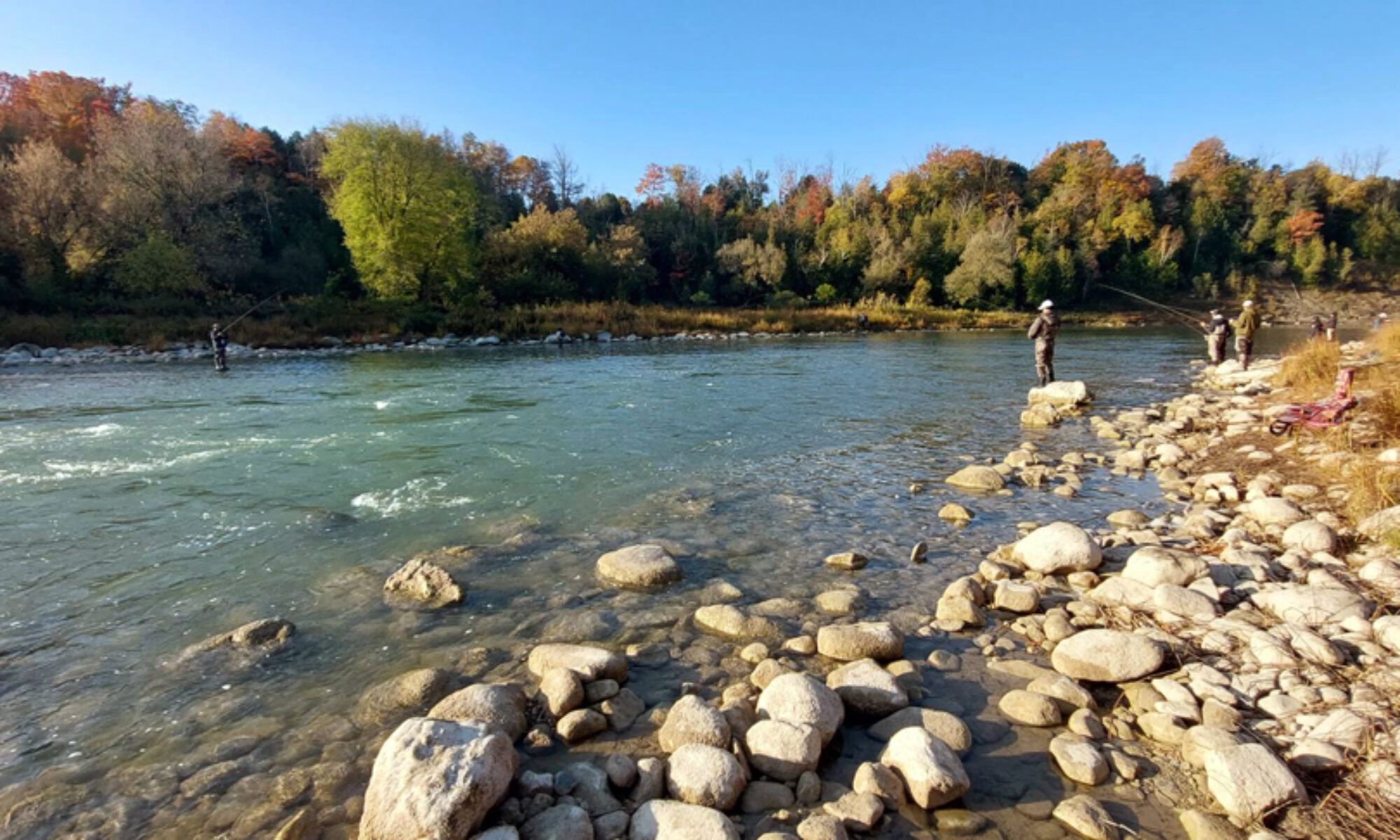Fisheries Report
By Darryl Choronzey
For starters, let‟s just say that the Ontario Steelheaders in partnership with the Lake Huron Fishing Club and Ministry of Natural Resources have accomplished one hell of a lot over the last six months. It‟s been very interesting watching things develop and in a few cases the results have even surprised me. To be honest, it doesn‟t take a rocket scientist to simply raise and release fish. Hell, numerous clubs around Ontario raise fish, but with many; their results are all but nil.
The important questions to be asked though are:
- – do we want the fish to grow and survive?
- – do we want fish to return to our stocking sites to spawn?
- – do we want fish to naturally reproduce and survive on their own?
For too many years, too many angling organizations and the Ministry of Natural Resources have been stocking inferior sized rainbow trout and other species in the wrong locations. Little if any survival has been achieved. Fish have not been imprinted properly and fail to return to generate a sport fishery. If they don‟t return to their release sites they definitely aren‟t going to reproduce.
A little more than a half dozen years ago, the Ontario Steelheaders met with the Lake Huron Fishing Club and the Ministry of Natural Resources to formulate a plan to achieve all three of these goals.
In my estimation, there is only one other club in the province that is presently rearing rainbow trout yearling smolt that can compare with those being raised in the Lake Huron Fishing Club‟s Kincardine and Port Elgin fish hatcheries. The boys from Lake Huron for the most part annually raise some of the healthiest 8 to 9 inch rainbow smolts for spring release. Every April for the past six years approximately 60,000 yearling steelhead are stocked far upstream in the main Saugeen.
Lobbies Park in Walkerton is without a doubt one of the best stocking locations to help achieve our goals on the Saugeen River. It‟s approximately 50 miles upstream on the main system. This location provides „prime‟ imprinting of the one year old fish. For the most part, minutes after being released from the tanker truck the youngsters are down river bound for Lake Huron, but on that journey they are picking up all the necessary imprinting senses they need to return and spawn.
The first part of our goals has been achieved. The first autumn after the initial stocking we witnessed excellent returns of juveniles back to the river. Today, six years after that initial stocking, we are witnessing a tenfold return of adult rainbow back to the river.
But our goal is and always has been to achieve self-supporting natural reproduction. That goal now seems to be just around the corner, but we have to get those returning fish around that corner. The main Saugeen below Walkerton may look like prime trout breeding water, but it isn‟t. It‟s a big stretch of river that‟s often too muddy and too warm for adequate and successful steelhead propagation. The North Saugeen is even worse. Over the last two years I‟ve carried out a series of temperature checks in numerous locations above Lockerby dam and the 82 to 85 degree temperature readings are lethal to the extreme. Rainbow introduced here are toasted and fried before most will ever head downstream and reproduction will never happen. As for any lucky fish that do survive the downstream journey to the lake, the dam at Lockerby will prevent them from even getting up into those „supposed‟ spawning waters.
The returning rainbow trout have to get above Walkerton and then make their way into the Beatty Saugeen. The Beatty Saugeen River, from Hanover to Highway 6 is prime trout spawning water. For almost 50 miles it‟s a cold clear steelhead heaven. Besides its natural characteristics, this stretch of pristine flow is almost inaccessible and offers undisturbed protection for producing the „wild‟ strain that we are attempting to introduce.
Let’s have a look at just what we have achieved in the last six months. To be honest, it’s pretty damn impressive. I’m probably more optimistic than most, but even I’m pretty blown away by what has been achieved in this short time period.
What The Hell….Let’s Say It’s Pretty Damn Amazing!
Spring Steelhead Adult Transfer
For starters, it has to be remembered that the Ontario Steelheaders have been stocking adult rainbow trout into the Beatty Saugeen for what seems to be eons. Remember, the purpose of this project is to place adult steelhead into the prime nursery waters of the Beatty so they reproduce successfully and their protégé hatch, thrive, and grow 12 months or more in the cold waters, smolt down to the lake and then as adults, return to reproduce on their own in these same waters.
In recent years, the Ontario Steelheaders collected as many as 300 adults at Denny’s Dam. In the spring of 2011 we raised that bar, and attempted to collect 1,000 adult rainbow. I was hoping we would attain this goal in a little more than two weeks. Well, a small group of volunteers reached that that thousand fish target in 4 1⁄2 days!!!! On top of that amazing number we believe that just as many returning steelhead were lifted or passed through the fishway in that same period. Totally frigg’n amazing!
The volunteers that were part of this project were members of both the Ontario Steelheaders and the Lake Huron Fishing Club.
I always hate to name names, because you always forget someone, but I would like to personally thank Pete Gilles, Johnny Campbell, Brian Hambley, Grant McAlpine (and his group of tireless followers), and the two “lid losers” Mike McDonald and Kirk Lund. Once again I hate naming names but to everyone involved…a big thank you!
Remember please, we need your assistance to keep this great program rolling.
Finishing Thoughts
- -One great working relationship between the Ontario Steelheaders, Lake Huron Fishing Club and the Ontario Ministry of Natural Resources – 65,000 amazing steelhead smolt stocked again in the Saugeen River – 1,000 adult steelhead transferred to the Beatty
- – the new improved Walkerton Fishway completed – the all new Maple Hill Dam completed – 65,000 advanced fall fingerling steelhead to be stocked in November in the Beatty Saugeen River – 65,000 steelhead presently in the Kincardine Hatchery for spring yearling release in 2012 in the upper Saugeen -the transfer permit has been received for autumn adult steelhead to the Beatty – An all new MNR Chatsworth Complimentary stocking program for 2013-2016 of 50,000 yearlings annually

